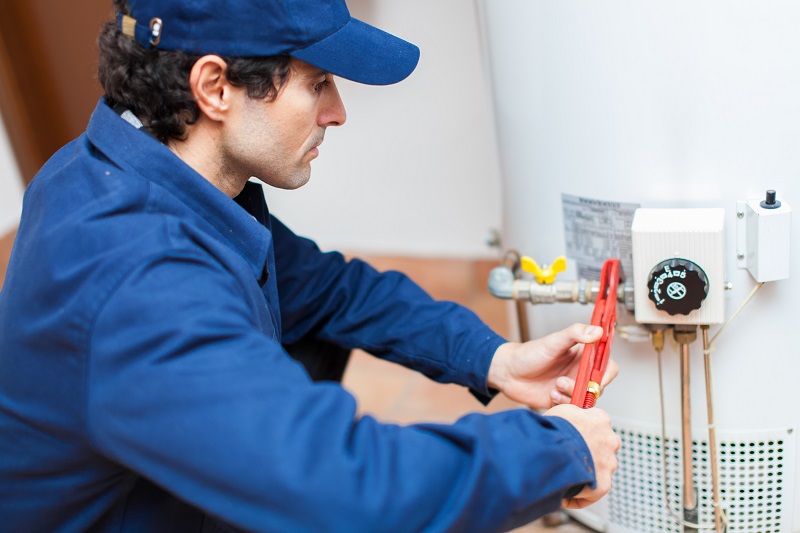Key Takeaways
- Regular maintenance and prompt leak repairs prevent water waste and property damage.
- Water-efficient fixtures and appliances lower consumption and utility bills.
- Conservation methods, such as rainwater harvesting and smart irrigation, help protect water supplies.
- Routine water quality testing keeps your drinking water safe.
Maintaining a consistent and safe water supply at home goes beyond mere convenience—it protects your health, home, and wallet. Proactive steps can help you avoid costly repairs and promote water conservation efforts. Creating routine habits around inspection, upkeep, and smart usage ensures you always have access to clean, safe water. For those relying on private wells, regular well pump maintenance Fort Bend County is crucial to ensure water flows efficiently and protects your family’s water quality.
As climate change and demand put additional pressure on local water supplies, homeowners play a crucial role in managing this precious resource. Caring for your plumbing systems, investing in efficient fixtures, and taking conservation measures not only benefits your household but also contributes to broader sustainability within your community. By fostering these key practices, you help secure water availability for generations to come.
Ensuring the reliability of your water system doesn’t have to be complicated. A thoughtful approach covering everything from leak checks to rainwater harvesting keeps your water safe, abundant, and accessible. The following takeaways and strategies provide practical ways to protect your home and address ongoing water challenges.
Fix Leaks Promptly
Even a small leak in your taps, toilets, or pipes can waste thousands of gallons of water each year, increase your water bill, and lead to costly water damage or even mold growth. Homeowners should inspect high-risk areas, such as under sinks and around toilets, for drips or moisture each month. Quick repairs not only stop water waste but also prevent structural damage to your home.
Install Water-Efficient Fixtures
Upgrading old faucets, toilets, and showerheads to low-flow models is one of the quickest ways to reduce water usage without sacrificing your comfort. Modern low-flow fixtures can cut household water consumption by up to 30%. Look for products labeled with the EPA’s WaterSense certification—these are independently tested to guarantee water savings while delivering excellent performance. Such simple swaps help curb waste and lower your utility bills over time.
Upgrade to Efficient Appliances
Older washing machines and dishwashers are notorious for using more water and energy than necessary. Upgrading to ENERGY STAR-certified appliances can reduce water use by up to half in some cases. Efficient models often include smart sensors that optimize load sizes and water levels, further reducing waste. While the upfront cost is higher, the long-term savings on your monthly bills, combined with the reduced environmental impact, quickly add up.
Practice Smart Lawn Watering
Lawns and landscaping are often the single biggest source of household water use, but much of this water is lost to evaporation and runoff. The key is to water only when needed and to do so efficiently. Water your lawn early in the morning or late in the evening to minimize evaporation. Drip irrigation or soaker hoses target plant roots directly, reducing waste. Adjust sprinklers to avoid watering sidewalks and driveways, and group plants with similar needs together to optimize your watering schedule. Using these methods can reduce outdoor water use by 20-50%.
Harvest Rainwater
Rainwater harvesting is a simple, sustainable solution for watering gardens and lawns. Simple rain barrels collect water from your roof that can be used for landscaping or washing outdoor items. This reduces your dependence on municipal water or your well, ensuring you have a backup supply during periods of drought or water restrictions. Be sure to check local guidelines on rainwater harvesting to ensure you are in compliance with regulations.
Test Water Quality Regularly
Regularly testing your water for contaminants like lead, bacteria, and nitrates is critical for households, especially those using private wells. Schedule annual tests through a certified lab, and act immediately if results show suspicious levels of pollutants. Drinking safe water is a key step to ensuring your family’s health. The Centers for Disease Control and Prevention is a useful resource for learning about risks and the testing process.
Maintain Plumbing Systems
Yearly inspections and preventive maintenance keep your pipes, valves, and fixtures running efficiently. Flush your water heater annually to prevent buildup, check for corroded pipes, and clean aerators in faucets for steady water pressure. Preventative care is especially important for older homes to minimize the risk of burst pipes and contamination. If you’re not comfortable doing this yourself, consider scheduling a professional plumbing inspection.
Educate Household Members
Lasting change comes when everyone in the home understands and participates in water-saving habits. Teach children and adults simple practices, such as turning off taps while brushing their teeth, running dishwashers and laundry machines only with full loads, and reporting leaks as soon as they’re noticed. Consider posting reminders around sinks and faucets to reinforce water-conserving habits.
Incorporating these key habits into your daily routine ensures a safe and reliable water supply while helping conserve resources on a broader scale. Homeowners who are proactive about maintaining their plumbing and mindful of their water use create positive ripple effects, benefiting not only their own household but also their entire community.
Conclusion
Maintaining a reliable water supply requires consistent care, awareness, and preventive action. By developing smart habits—such as monitoring water pressure, scheduling routine system inspections, and addressing leaks promptly—homeowners can avoid costly repairs and service interruptions. Prioritizing water conservation and equipment upkeep not only safeguards your household’s daily needs but also supports long-term sustainability. By focusing on these key practices, you can ensure that your home remains efficient, resilient, and well-prepared for the future.

